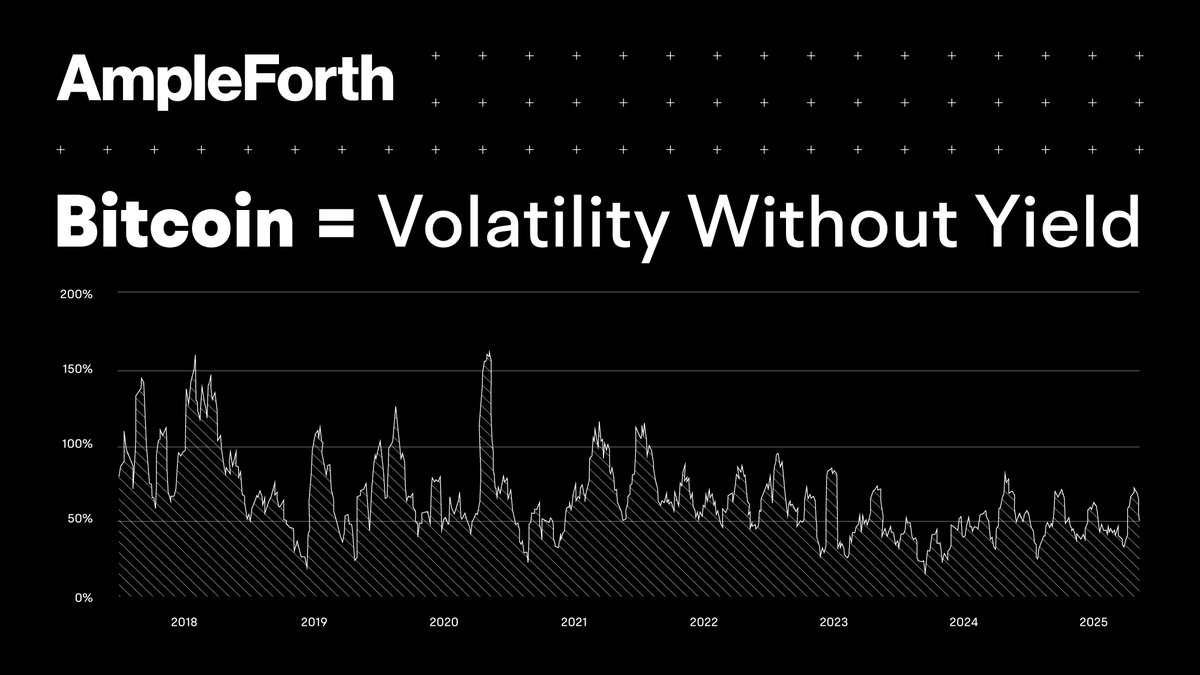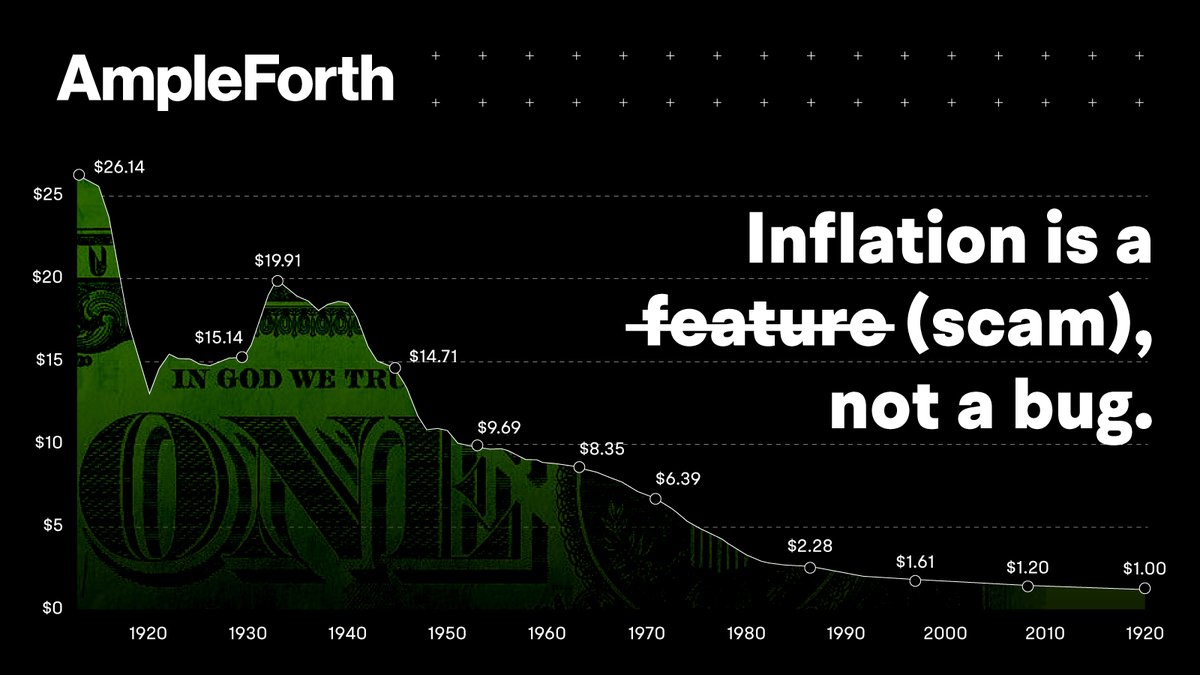
FORTH
Ampleforth Governance-pris
$2,6990
-$0,15200
(−5,34 %)
Prisförändring de senaste 24 timmarna

Hur känner du för FORTH idag?
Dela dina känslor här genom att göra tummen upp om du känner dig bullish för coin eller tummen ner om du känner dig bearish.
Rösta för att visa resultat
Friskrivningsklausul
Det sociala innehållet på den här sidan ("Innehållet"), inklusive men inte begränsat till tweets och statistik som tillhandahålls av LunarCrush, kommer från tredje part och tillhandahålls " i befintligt skick" och endast i informationssyfte. OKX garanterar inte innehållets kvalitet eller sanningshalt, och innehållet representerar inte OKX:s åsikter. Det är inte avsett att tillhandahålla (i) investeringsrådgivning eller -rekommendationer; (ii) ett erbjudande eller en uppmaning att köpa, sälja eller inneha digitala tillgångar; eller (iii) finansiell, redovisnings-, juridisk eller skatterådgivning. Digitala tillgångar, inklusive stabil kryptovaluta och NFT:er, innebär en hög grad av risk och kan fluktuera kraftigt. Priset och prestandan för den digitala tillgången är inte garanterade och kan ändras utan föregående meddelande.<br>OKX tillhandahåller inga rekommendationer om investeringar eller tillgångar. Du bör noga överväga om handel eller innehav av digitala tillgångar är lämpligt för dig, med tanke på din ekonomiska situation. Vänligen rådfråga en juridisk-/skatte-/investeringsrådgivare för frågor om just dina specifika omständigheter. För mer information, vänligen se våra <a href="/help/terms-of-service">Användarvillkor</a> och <a href="/help/risk-compliance-disclosure">Riskvarning</a>. Genom att använda tredjepartswebbplatsen (”third-party website/TPW”) godkänner du att all användning av TPW kommer att omfattas av och regleras av villkoren i TPW. Om inte annat uttryckligen anges skriftligen är OKX och dess dotterbolag ( OKX ) inte på något sätt associerade med ägaren eller operatören av TPW. Du samtycker till att OKX inte är ansvarigt eller skyldigt för någon förlust, skada eller andra konsekvenser som uppstår på grund av din användning av TPW. Vänligen observera om att användning av en TPW kan resultera i förlust eller minskning av dina tillgångar. Produkten kanske inte är tillgänglig i alla jurisdiktioner.
Ampleforth Governance marknadsinfo
Marknadsvärde
Marknadsvärde beräknas genom att multiplicera det cirkulerande utbudet av ett coin med dess senaste pris.
Börsvärde = Cirkulerande utbud × Senaste pris
Börsvärde = Cirkulerande utbud × Senaste pris
Cirkulerande utbud
Totalt belopp för ett coin som är allmänt tillgängligt på marknaden.
Marknadsvärde-rankning
Ett coins rankning i termer av marknadsvärde.
Högsta någonsin
Högsta pris ett coin har nått i sin handelshistorik.
Lägsta någonsin
Lägsta pris ett coin har nått i sin handelshistorik.
Marknadsvärde
$30,90M
Cirkulerande utbud
11 454 226 FORTH
74,87 % av
15 297 897 FORTH
Marknadsvärde-rankning
--
Granskningar

Senaste granskningen: 12 feb. 2021
Högsta priset under 24 tim
$2,8840
Lägsta priset under 24 tim
$2,6730
Högsta någonsin
$61,8000
−95,64 % (-$59,1010)
Senast uppdaterad: 22 apr. 2021
Lägsta någonsin
$1,8880
+42,95 % (+$0,81100)
Senast uppdaterad: 6 apr. 2025
Ampleforth Governance-flödet
Följande innehåll är hämtat från .

Ampleforth
Varför inte bara hålla $BTC?
För att @SPOTprotocol finns.
$SPOT ger portföljarkitekter en strategisk tillgång för att öka resultatet genom att begränsa nedsidan och få avkastning på annars stabila värdeinnehav.
Portföljer som integrerar både BTC och SPOT drar nytta av:
- Bitcoins långsiktiga uppsida
- SPOT:s förmåga att jämna ut volatiliteten och erbjuda verklig avkastning
Bitcoins långsiktiga bana förblir uppåt, men dess tillfälliga anfall av extrem volatilitet begränsar den allvarligt som ett pålitligt finansiellt verktyg utanför spekulation eller långsiktigt värdeinnehav.
BTC kan rutinmässigt möta 30% + neddragningar som helt raderar dess trovärdighet för olika finansiella applikationer, som kontraktsvalörer.
I kontrast till detta introducerar SPOT en fundamentalt ny dynamik: knapphet och genuin stabilitet.
SPOT är utformad för att motstå inflation och minimera volatilitet och offrar extrem uppåtpotential för drastiskt minskad nedåtrisk, vilket skapar en mer praktisk tillgång som fungerar lika bra som ett värdeförråd och en stabil beräkningsenhet.
Dessutom genererar SPOT konsekvent, reala avkastningar enbart genom organisk marknadsaktivitet.
SPOT fungerar alltså som en avkastningsgenererande Bitcoin med låg volatilitet som erbjuder en mer gynnsam riskprofil under hela marknadscykeln.
Visa original
21,4 tn
58

chizhao delade inlägget

Ampleforth
Inflation är en funktion, inte en bugg.
Centralbanker som den amerikanska centralbanken siktar på en inflation på 3-4 % för att "stimulera utgifterna".
Men vad de i själva verket gör är att i tysthet beskatta fiatsparare. Sedan 1913 har dollarn tappat över 97 % av sitt värde.
Det vill säga, 100 dollar som sparades 1913 köper bara 3 dollar värda idag. Det här är den ultimata, generationslångsamma mattdragningen.
@SPOTprotocol är utformat för att du verkligen ska kunna välja bort fiat-inflation. Den är decentraliserad, matematiskt driven och inflationsbeständig.
När centralbanker trycker ökar SPOT.
Allt du behöver göra är att hålla.
Visa original
54,42 tn
74
FORTH-kalkylator


Ampleforth Governance prisutveckling i USD
Aktuellt pris på Ampleforth Governance är $2,6990. Under de senaste 24 timmarna har Ampleforth Governance minskade med −5,33 %. Det har för närvarande ett cirkulerande utbud av 11 454 226 FORTH och ett maximalt utbud av 15 297 897 FORTH, vilket ger ett marknadsvärde efter full utspädning på $30,90M. För tillfället innehar Ampleforth Governance-coin position 0 i marknadsvärdesrankningar. Ampleforth Governance/USD-priset uppdateras i realtid.
Idag
-$0,15200
−5,34 %
7 dagar
-$0,27500
−9,25 %
30 dagar
+$0,18900
+7,52 %
3 månader
-$0,95300
−26,10 %
Populära Ampleforth Governance-omvandlingar
Senast uppdaterad: 2025-05-17 15:03
Om Ampleforth Governance (FORTH)
- Officiell webbplats
- Vitbok
- Github
- Block explorer
Om tredjeparts webbplatser
Om tredjeparts webbplatser
Genom att använda tredjepartswebbplatsen (”TPW”) samtycker du till att all användning av TPW kommer att omfattas av och styras av villkoren i TPW. Om inte annat uttryckligen anges skriftligen är OKX och dess affiliates (”OKX”) inte på något sätt associerade med ägaren eller operatören av TPW. Du samtycker till att OKX inte är ansvarigt eller skadeståndsskyldigt för förlust, skada eller andra konsekvenser som uppstår till följd av din användning av TPW. Var medveten om att användning av en TPW kan leda till förlust eller minskning av dina tillgångar.
Vanliga frågor för Ampleforth Governance
Hur mycket är 1 Ampleforth Governance värd idag?
För närvarande är en Ampleforth Governance värd $2,6990. För svar och insikt om prisåtgärder för Ampleforth Governance är du på rätt plats. Utforska de senaste diagrammen för Ampleforth Governance och handla ansvarsfullt med OKX.
Vad är kryptovalutor?
Kryptovalutor, till exempel Ampleforth Governance, är digitala tillgångar som fungerar på en offentlig reskontra som kallas blockkedjor. Läs mer om coins och tokens som erbjuds på OKX och deras olika attribut, som inkluderar live-priser och realtidsdiagram.
När uppfanns kryptovalutor?
Tack vare finanskrisen 2008 ökade intresset för decentraliserad finansiering. Bitcoin erbjöd en ny lösning genom att vara en säker digital tillgång på ett decentraliserat nätverk. Sedan dess har många andra tokens som t.ex. Ampleforth Governance skapats också.
Kommer priset på Ampleforth Governance gå upp idag?
Se vår Ampleforth Governance prisprognossida för att förutse framtida priser och fastställa dina prismål.
ESG-upplysning
ESG-regleringar (Environmental, Social och Governance) för kryptotillgångar syftar till att ta itu med eventuell miljöpåverkan (t.ex. energiintensiv mining), främja transparens och säkerställa etiska förvaltningsmetoder för att anpassa kryptoindustrin till bredare hållbarhets- och samhälleliga mål. Dessa regleringar uppmuntrar efterlevnad av standarder som minskar risker och främjar förtroende för digitala tillgångar.
Tillgångsdetaljer
Namn
OKcoin Europe LTD
Relevant juridisk enhetsidentifierare
54930069NLWEIGLHXU42
Namn på kryptotillgången
Ampleforth Governance Token
Konsensusmekanism
Ampleforth Governance Token is present on the following networks: ethereum, near_protocol.
The Ethereum network uses a Proof-of-Stake Consensus Mechanism to validate new transactions on the blockchain. Core Components 1. Validators: Validators are responsible for proposing and validating new blocks. To become a validator, a user must deposit (stake) 32 ETH into a smart contract. This stake acts as collateral and can be slashed if the validator behaves dishonestly. 2. Beacon Chain: The Beacon Chain is the backbone of Ethereum 2.0. It coordinates the network of validators and manages the consensus protocol. It is responsible for creating new blocks, organizing validators into committees, and implementing the finality of blocks. Consensus Process 1. Block Proposal: Validators are chosen randomly to propose new blocks. This selection is based on a weighted random function (WRF), where the weight is determined by the amount of ETH staked. 2. Attestation: Validators not proposing a block participate in attestation. They attest to the validity of the proposed block by voting for it. Attestations are then aggregated to form a single proof of the block’s validity. 3. Committees: Validators are organized into committees to streamline the validation process. Each committee is responsible for validating blocks within a specific shard or the Beacon Chain itself. This ensures decentralization and security, as a smaller group of validators can quickly reach consensus. 4. Finality: Ethereum 2.0 uses a mechanism called Casper FFG (Friendly Finality Gadget) to achieve finality. Finality means that a block and its transactions are considered irreversible and confirmed. Validators vote on the finality of blocks, and once a supermajority is reached, the block is finalized. 5. Incentives and Penalties: Validators earn rewards for participating in the network, including proposing blocks and attesting to their validity. Conversely, validators can be penalized (slashed) for malicious behavior, such as double-signing or being offline for extended periods. This ensures honest participation and network security.
The NEAR Protocol uses a unique consensus mechanism combining Proof of Stake (PoS) and a novel approach called Doomslug, which enables high efficiency, fast transaction processing, and secure finality in its operations. Here's an overview of how it works: Core Concepts 1. Doomslug and Proof of Stake: - NEAR's consensus mechanism primarily revolves around PoS, where validators stake NEAR tokens to participate in securing the network. However, NEAR's implementation is enhanced with the Doomslug protocol. - Doomslug allows the network to achieve fast block finality by requiring blocks to be confirmed in two stages. Validators propose blocks in the first step, and finalization occurs when two-thirds of validators approve the block, ensuring rapid transaction confirmation. 2. Sharding with Nightshade: - NEAR uses a dynamic sharding technique called Nightshade. This method splits the network into multiple shards, enabling parallel processing of transactions across the network, thus significantly increasing throughput. Each shard processes a portion of transactions, and the outcomes are merged into a single "snapshot" block. - This sharding approach ensures scalability, allowing the network to grow and handle increasing demand efficiently. Consensus Process 1. Validator Selection: - Validators are selected to propose and validate blocks based on the amount of NEAR tokens staked. This selection process is designed to ensure that only validators with significant stakes and community trust participate in securing the network. 2. Transaction Finality: - NEAR achieves transaction finality through its PoS-based system, where validators vote on blocks. Once two-thirds of validators approve a block, it reaches finality under Doomslug, meaning that no forks can alter the confirmed state. 3. Epochs and Rotation: - Validators are rotated in epochs to ensure fairness and decentralization. Epochs are intervals in which validators are reshuffled, and new block proposers are selected, ensuring a balance between performance and decentralization.
Incitamentmekanismer och tillämpliga avgifter
Ampleforth Governance Token is present on the following networks: ethereum, near_protocol.
Ethereum, particularly after transitioning to Ethereum 2.0 (Eth2), employs a Proof-of-Stake (PoS) consensus mechanism to secure its network. The incentives for validators and the fee structures play crucial roles in maintaining the security and efficiency of the blockchain. Incentive Mechanisms 1. Staking Rewards: Validator Rewards: Validators are essential to the PoS mechanism. They are responsible for proposing and validating new blocks. To participate, they must stake a minimum of 32 ETH. In return, they earn rewards for their contributions, which are paid out in ETH. These rewards are a combination of newly minted ETH and transaction fees from the blocks they validate. Reward Rate: The reward rate for validators is dynamic and depends on the total amount of ETH staked in the network. The more ETH staked, the lower the individual reward rate, and vice versa. This is designed to balance the network's security and the incentive to participate. 2. Transaction Fees: Base Fee: After the implementation of Ethereum Improvement Proposal (EIP) 1559, the transaction fee model changed to include a base fee that is burned (i.e., removed from circulation). This base fee adjusts dynamically based on network demand, aiming to stabilize transaction fees and reduce volatility. Priority Fee (Tip): Users can also include a priority fee (tip) to incentivize validators to include their transactions more quickly. This fee goes directly to the validators, providing them with an additional incentive to process transactions efficiently. 3. Penalties for Malicious Behavior: Slashing: Validators face penalties (slashing) if they engage in malicious behavior, such as double-signing or validating incorrect information. Slashing results in the loss of a portion of their staked ETH, discouraging bad actors and ensuring that validators act in the network's best interest. Inactivity Penalties: Validators also face penalties for prolonged inactivity. This ensures that validators remain active and engaged in maintaining the network's security and operation. Fees Applicable on the Ethereum Blockchain 1. Gas Fees: Calculation: Gas fees are calculated based on the computational complexity of transactions and smart contract executions. Each operation on the Ethereum Virtual Machine (EVM) has an associated gas cost. Dynamic Adjustment: The base fee introduced by EIP-1559 dynamically adjusts according to network congestion. When demand for block space is high, the base fee increases, and when demand is low, it decreases. 2. Smart Contract Fees: Deployment and Interaction: Deploying a smart contract on Ethereum involves paying gas fees proportional to the contract's complexity and size. Interacting with deployed smart contracts (e.g., executing functions, transferring tokens) also incurs gas fees. Optimizations: Developers are incentivized to optimize their smart contracts to minimize gas usage, making transactions more cost-effective for users. 3. Asset Transfer Fees: Token Transfers: Transferring ERC-20 or other token standards involves gas fees. These fees vary based on the token's contract implementation and the current network demand.
NEAR Protocol employs several economic mechanisms to secure the network and incentivize participation: Incentive Mechanisms to Secure Transactions: 1. Staking Rewards: Validators and delegators secure the network by staking NEAR tokens. Validators earn around 5% annual inflation, with 90% of newly minted tokens distributed as staking rewards. Validators propose blocks, validate transactions, and receive a share of these rewards based on their staked tokens. Delegators earn rewards proportional to their delegation, encouraging broad participation. 2. Delegation: Token holders can delegate their NEAR tokens to validators to increase the validator's stake and improve the chances of being selected to validate transactions. Delegators share in the validator's rewards based on their delegated tokens, incentivizing users to support reliable validators. 3. Slashing and Economic Penalties: Validators face penalties for malicious behavior, such as failing to validate correctly or acting dishonestly. The slashing mechanism enforces security by deducting a portion of their staked tokens, ensuring validators follow the network's best interests. 4. Epoch Rotation and Validator Selection: Validators are rotated regularly during epochs to ensure fairness and prevent centralization. Each epoch reshuffles validators, allowing the protocol to balance decentralization with performance. Fees on the NEAR Blockchain: 1. Transaction Fees: Users pay fees in NEAR tokens for transaction processing, which are burned to reduce the total circulating supply, introducing a potential deflationary effect over time. Validators also receive a portion of transaction fees as additional rewards, providing an ongoing incentive for network maintenance. 2. Storage Fees: NEAR Protocol charges storage fees based on the amount of blockchain storage consumed by accounts, contracts, and data. This requires users to hold NEAR tokens as a deposit proportional to their storage usage, ensuring the efficient use of network resources. 3. Redistribution and Burning: A portion of the transaction fees (burned NEAR tokens) reduces the overall supply, while the rest is distributed to validators as compensation for their work. The burning mechanism helps maintain long-term economic sustainability and potential value appreciation for NEAR holders. 4. Reserve Requirement: Users must maintain a minimum account balance and reserves for data storage, encouraging efficient use of resources and preventing spam attacks.
Början av den period som upplysningen avser
2024-04-20
Slutet av den period som upplysningen avser
2025-04-20
Energirapport
Energiförbrukning
877.36142 (kWh/a)
Energiförbrukningskällor och -metoder
The energy consumption of this asset is aggregated across multiple components:
To determine the energy consumption of a token, the energy consumption of the network(s) ethereum, near_protocol is calculated first. Based on the crypto asset's gas consumption per network, the share of the total consumption of the respective network that is assigned to this asset is defined. When calculating the energy consumption, we used - if available - the Functionally Fungible Group Digital Token Identifier (FFG DTI) to determine all implementations of the asset of question in scope and we update the mappings regulary, based on data of the Digital Token Identifier Foundation.
FORTH-kalkylator















